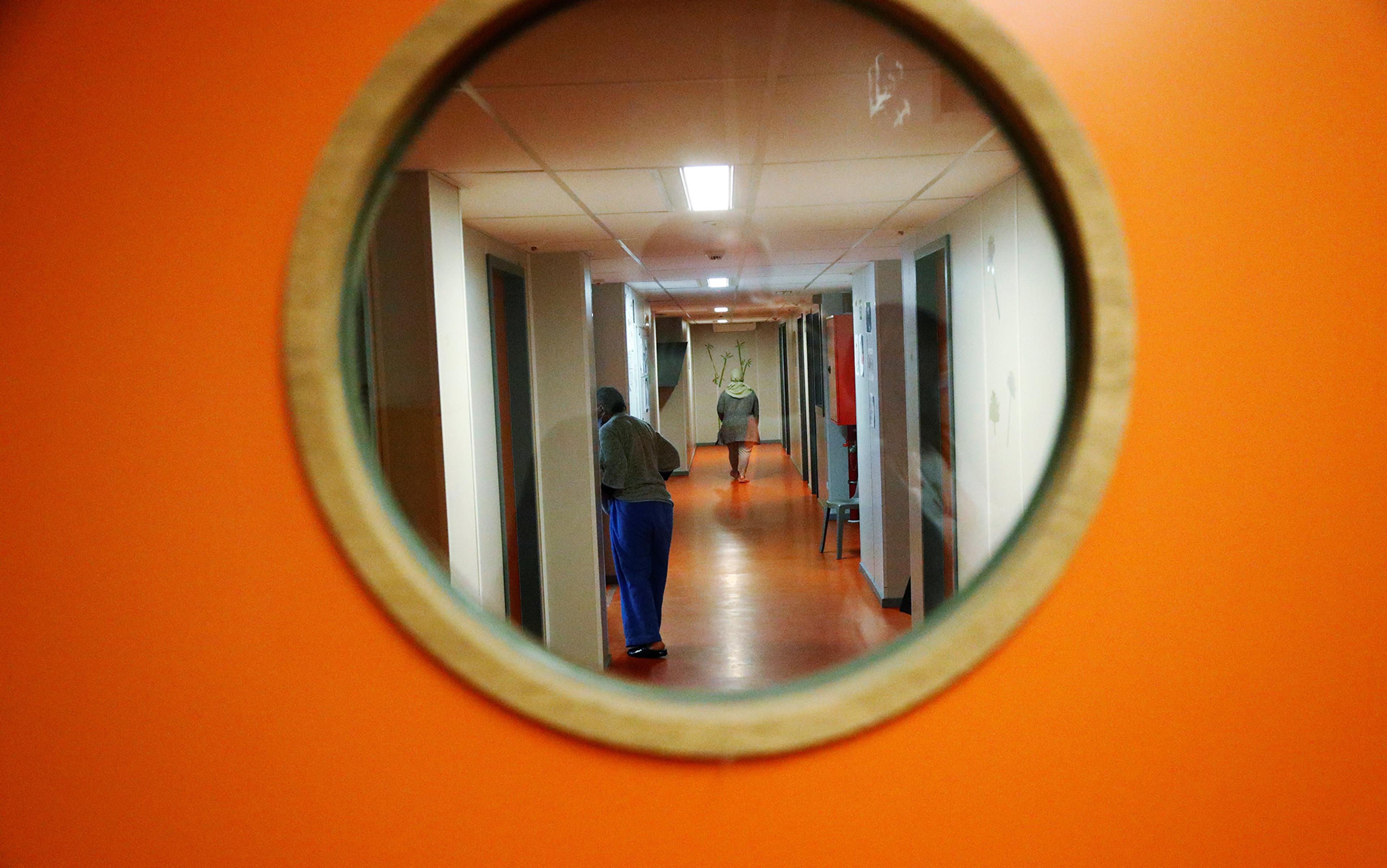When a psychiatrist meets people at a party and reveals what he or she does for a living, two responses are typical. People either say, ‘I’d better be careful what I say around you,’ and then clam up, or they say, ‘I could talk to you for hours,’ and then launch into a litany of complaints and diagnostic questions, usually about one or another family member, in-law, co-worker, or other acquaintance. It seems that people are quick to acknowledge the ubiquity of those who might benefit from a psychiatrist’s attention, while expressing a deep reluctance ever to seek it out themselves.
That reluctance is understandable. Although most of us crave support, understanding, and human connection, we also worry that if we reveal our true selves, we’ll be judged, criticised, or rejected in some way. And even worse – perhaps calling upon antiquated myths – some worry that, if we were to reveal our inner selves to a psychiatrist, we might be labelled crazy, locked up in an asylum, medicated into oblivion, or put into a straitjacket. Of course, such fears are the accompaniment of the very idiosyncrasies, foibles, and life struggles that keep us from unattainably perfect mental health.
As a psychiatrist, I see this as the biggest challenge facing psychiatry today. A large part of the population – perhaps even the majority – might benefit from some form of mental health care, but too many fear that modern psychiatry is on a mission to pathologise normal individuals with some dystopian plan fuelled by the greed of the pharmaceutical industry, all in order to put the populace on mind-numbing medications. Debates about psychiatric overdiagnosis have amplified in the wake of last year’s release of the newest edition of the Diagnostic and Statistical Manual of Mental Disorders (DSM-5), the so-called ‘bible of psychiatry’, with some particularly vocal critics coming from within the profession.
It’s true that the scope of psychiatry has greatly expanded over the past century. A hundred years ago, the profession had a near-exclusive focus on the custodial care of severely ill asylum patients. Now, psychiatric practice includes the office-based management of the ‘worried well’. The advent of psychotherapy, starting with the arrival of Sigmund Freud’s psychoanalysis at the turn of the 20th century, drove the shift. The ability to treat less severe forms of psychopathology – such as anxiety and so-called adjustment disorders related to life stressors – with the talking cure has had profound effects on mental health care in the United States.
Early forms of psychotherapy paved the way for the Mental Hygiene Movement that lasted from about 1910 through the 1950s. This public health model rejected hard boundaries of mental illness in favour of a view that acknowledged the potential for some degree of mental disorder to exist in nearly everyone. Interventions were recommended not just within a psychiatrist’s office, but broadly within society at large; schools and other community settings were all involved in providing support and help.
A new abundance of ‘neurotic’ symptoms stemming from the trauma experienced by veterans of the First and Second World Wars reinforced a view that mental health and illness existed on a continuous spectrum. And by the time DSM was first published in 1952, psychiatrists were treating a much wider swath of the population than ever before. From the first DSM through to the most recent revision, inclusiveness and clinical usefulness have been guiding principles, with the profession erring on the side of capturing all of the conditions that bring people to psychiatric care in order to facilitate evaluation and treatment.
In the modern era, psychotherapy has steered away from traditional psychoanalysis in favour of more practical, shorter-term therapies: for instance, psychodynamic therapy explores unconscious conflicts and underlying distress on a weekly basis for as little as a few months’ duration, and goal-directed cognitive therapy uses behavioural techniques to correct disruptive distortions in thinking. These streamlined psychotherapeutic techniques have widened the potential consumer base for psychiatric intervention; they have also expanded the range of clinicians who can perform therapy to include not only psychiatrists, but primary care doctors, psychologists, social workers, and marriage and family therapists.
In a similar fashion, newer medications with fewer side effects are more likely to be offered to people with less clear-cut psychiatric illnesses. Such medications can be prescribed by a family physician or, in some states, a psychologist or nurse practitioner.
Viewed through the lens of the DSM, it is easy to see how extending psychiatry’s helping hand deeper into the population is often interpreted as evidence that psychiatrists think more and more people are mentally ill. Recent epidemiological studies based upon DSM criteria have suggested that half or more of the US population will meet the threshold for mental disorder at some point in their lives. To many, the idea that it might be normal to have a mental illness sounds oxymoronic at best and conspiratorially threatening at worst. Yet the widening scope of psychiatry has been driven by a belief – on the parts of both mental health consumers and clinicians alike – that psychiatry can help with an increasingly large range of issues.
The diagnostic creep of psychiatry becomes more understandable by conceptualising mental illness, like most things in nature, on a continuum. Many forms of psychiatric disorder, such as schizophrenia or severe dementia, are so severe – that is to say, divergent from normality – that whether they represent illness is rarely debated. Other syndromes, such as generalised anxiety disorder, might more closely resemble what seems, to some, like normal worry. And patients might even complain of isolated symptoms such as insomnia or lack of energy that arise in the absence of any fully formed disorder. In this way, a continuous view of mental illness extends into areas that might actually be normal, but still detract from optimal, day-to-day function.
While a continuous view of mental illness probably reflects underlying reality, it inevitably results in grey areas where ‘caseness’ (whether someone does or does not have a mental disorder) must be decided based on judgment calls made by experienced clinicians. In psychiatry, those calls usually depend on whether a patient’s complaints are associated with significant distress or impaired functioning. Unlike medical disorders where morbidity is often determined by physical limitations or the threat of impending death, the distress and disruption of social functioning associated with mental illness can be fairly subjective. Even those on the softer, less severe end of the mental illness spectrum can experience considerable suffering and impairment. For example, someone with mild depression might not be on the verge of suicide, but could really be struggling with work due to anxiety and poor concentration. Many people might experience sub-clinical conditions that fall short of the threshold for a mental disorder, but still might benefit from intervention.
The truth is that while psychiatric diagnosis is helpful in understanding what ails a patient and formulating a treatment plan, psychiatrists don’t waste a lot of time fretting over whether a patient can be neatly categorised in DSM, or even whether or not that patient truly has a mental disorder at all. A patient comes in with a complaint of suffering, and the clinician tries to relieve that suffering independent of such exacting distinctions. If anything, such details become most important for insurance billing, where clinicians might err on the side of making a diagnosis to obtain reimbursement for a patient who might not otherwise be able to receive care.
Though many object to psychiatry’s perceived encroachment into normality, we rarely hear such complaints about the rest of medicine. Few lament that nearly all of us, at some point in our lives, seek care from a physician and take all manner of medications, most without need of a prescription, for one physical ailment or another. If we can accept that it is completely normal to be medically sick, not only with transient conditions such as coughs and colds, but also chronic disorders such as farsightedness, lower back pain, high blood pressure or diabetes, why can’t we accept that it might also be normal to be psychiatrically ill at various points in our lives?
The answer seems to be that psychiatric disorders carry a much greater degree of stigma compared with medical conditions. People worry that psychiatrists think everyone is crazy because they make the mistake of equating any form of psychiatric illness with being crazy. But that’s like equating a cough with tuberculosis or lung cancer. To be less stigmatising, psychiatry must support a continuous model of mental health instead of maintaining an exclusive focus on the mental disorders that make up the DSM. If general medicine can work within a continuous view of physical health and illness, there is no reason why psychiatry can’t as well.
Criticism of this view comes from concern over the type of intervention offered at the healthier end of the continuum. If the scope of psychiatry widens, will psychiatric medications be vastly overprescribed, as is already claimed with stimulants such as methylphenidate (Ritalin) for attention deficit hyperactivity disorder (ADHD)? This concern is well worth fretting over, given the uncertain effectiveness of medications for patients who don’t quite meet DSM criteria. For example, a 2008 study by the Harvard psychologist Irving Kirsch published in PLOS Medicine found that, for milder forms of depression, antidepressants are often no better than placebos. Likewise, recent research suggests that children at risk of developing psychosis – but not diagnosable just yet – might benefit more from fish oil or psychotherapy than antipsychotic drugs.
In the end, implementing pharmacotherapy for a given condition requires solid evidence from peer-reviewed research studies. Although by definition the benefit of medications decreases at the healthier end of a mental health continuum (if one isn’t as sick, the degree of improvement will be less), we need not reject all pharmacotherapy at the healthier end of the spectrum, provided medications are safe and effective. Of course, medications aren’t candy – most have a long list of potential side effects ranging from trivial to life-threatening. There’s a reason such medications require a prescription from a physician and why many psychiatrists are sceptical of proposals to grant prescribing privileges to health practitioners with far less medical training.
People worry that psychiatrists think everyone is crazy because they make the mistake of equating any form of psychiatric illness with being crazy. But that’s like equating a cough with tuberculosis or lung cancer
Pharmacotherapy for healthier individuals is likely to increase in the future as safer medications are developed, just as happened after selective serotonin re-uptake inhibitors (SSRIs) supplanted tricyclic antidepressants (TCAs) during the 1990s. In turn, the shift to medicating the healthier end of the continuum paves a path towards not only maximising wellness but enhancing normal functioning through ‘cosmetic’ intervention. Ultimately, availability of medications that enhance brain function or make us feel better than normal will be driven by consumer demand, not the Machiavellian plans of psychiatrists. The legal use of drugs to alter our moods is already nearly ubiquitous. We take Ritalin, modafinil (Provigil), or just our daily cup of caffeine to help us focus, stay awake, and make that deadline at work; then we reach for our diazepam (Valium), alcohol, or marijuana to unwind at the end of the day. If a kind of anabolic steroid for the brain were created, say a pill that could increase IQ by an average of 10 points with a minimum of side effects, is there any question that the public would clamour for it? Cosmetic psychiatry is a very real prospect for the future, with myriad moral and ethical implications involved.
In the final analysis, psychiatrists don’t think that everyone is crazy, nor are we necessarily guilty of pathologising normal existence and foisting medications upon the populace as pawns of the drug companies. Instead, we are just doing what we can to relieve the suffering of those coming for help, rather than turning those people away.
The good news for mental health consumers is that clinicians worth their mettle (and you might have to shop around to find one) don’t rely on the DSM as a bible in the way that many imagine, checking off symptoms like a computer might and trying to ‘shrink’ people into the confines of a diagnostic label. A good psychiatrist draws upon clinical experience to gain empathic understanding of each patient’s story, and then offers a tailored range of interventions to ease the suffering, whether it represents a disorder or is part of normal life.






